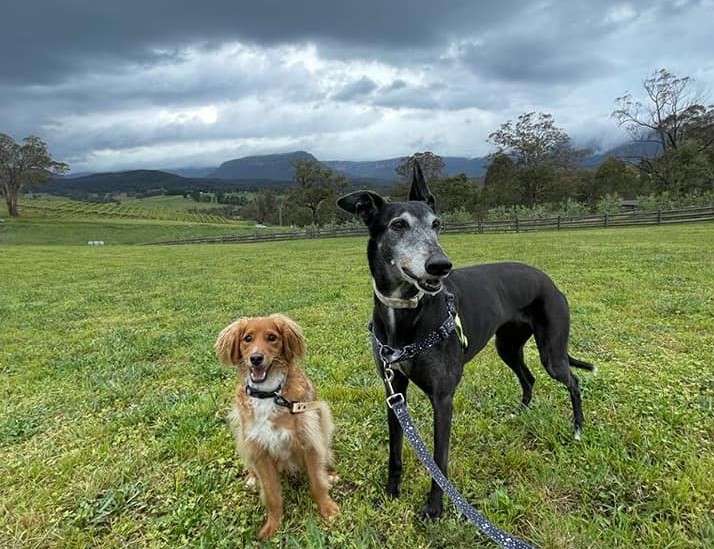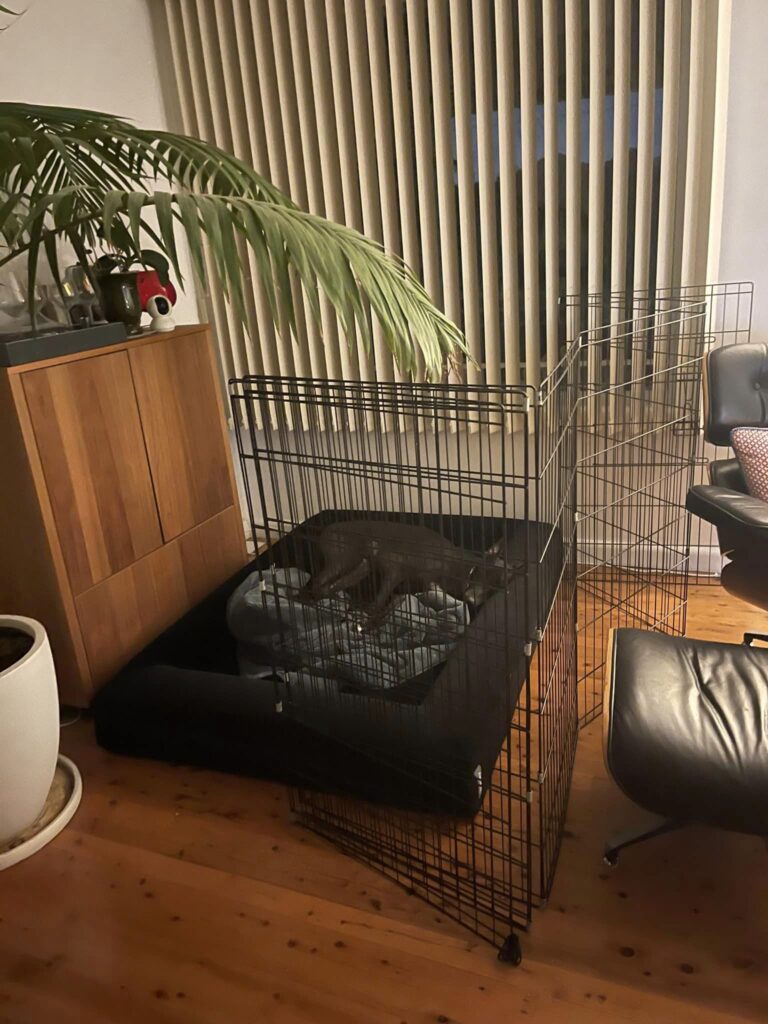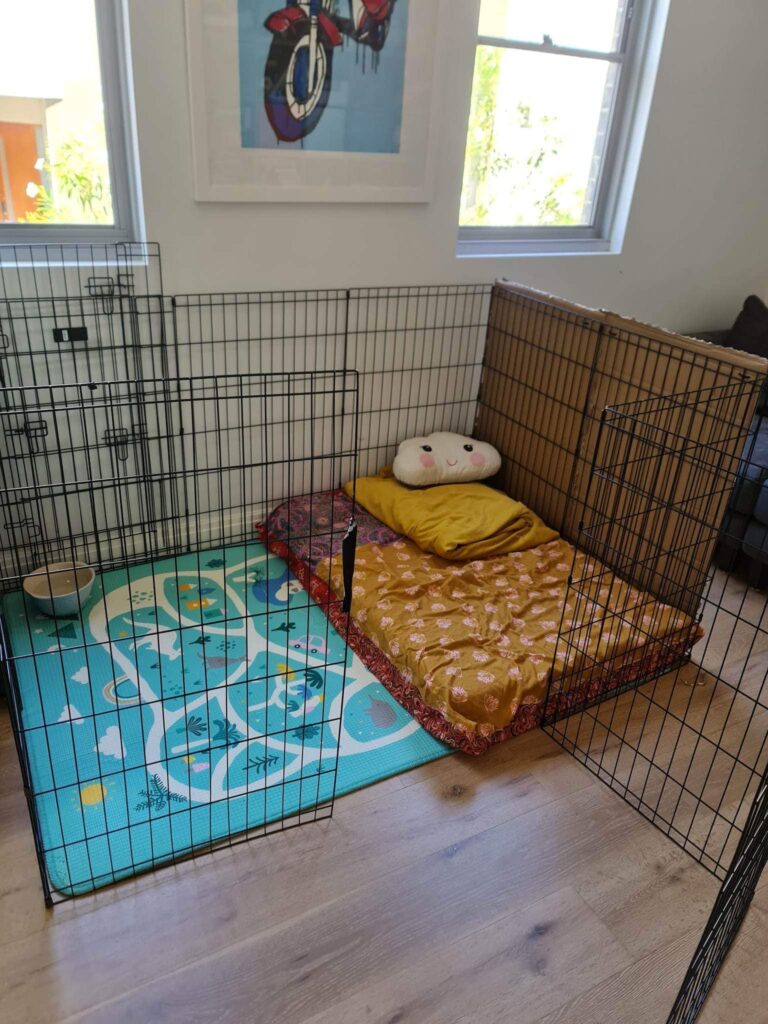
Imagine being in a new city, and you’ve just moved in with several new housemates. It would be an exciting but nerve-wracking experience for you. Well just like we humans, our hounds will have mixed feelings during their first few weeks in a home. Add to that an existing pooch, and it will be even more confusing for them.
It’s so important to manage your expectations when introducing a new greyhound into your home and becoming a multi-dog household. Not only are they learning how to be a pet, but they are also learning how to co-habit with a new dog.
Here are some important points to remember:
Relationships take time
Relationships between dogs, as with people, take time. Many greyhounds haven’t had to share anything before. This doesn’t mean that they won’t be able to, it just means that you must guide them and set them up for success. The overwhelming majority of greyhounds have lived solitary lives, usually in a kennel or paddock environment, separated from other greys.
Please don’t spend time trying to figure out which of your dogs is the ‘alpha’. This method of training has been thoroughly debunked, which you can read more about here. Paying attention to body language, lots of positive reinforcement and ensuring the emotional wellbeing of both dogs will have a much more positive impact.
Basic training is another essential to creating a positive relationship between the two. Spend some individual training time with each, making sure they understand basic commands through positive reinforcement training. Impulse control is an important one. It’s also great to reinforce good behaviour at times when one of your hounds may feel like they’re ‘missing out’, eg give one some treats for staying on their bed while the other is getting a lot of pats.
Arriving home
Always complete the re-introductions on neutral ground at the front of the home. Start around 10 metres apart. Allow the dogs to sniff around the area and come together slowly to sniff one another and say hello. The existing dog smelling the new greyhound and then walking away is an indication that the existing dog is comfortable.
Proceed to walk the dogs through a side gate to the backyard if available. Aim to walk the existing dog in first as they are comfortable with their environment and walk the new greyhound in behind them. Walk into the backyard if applicable and while still on lead, allow the dogs to smell the area and toilet outside.
When the dogs are happy sniffing and exploring, you can slowly allow them access into the home. Strictly monitor them, and please ensure there are two responsible adults present during the arrival of the new greyhound. It is a good idea to leave both dogs with their leads on in case you need to intervene or to move one dog to a different space.
Muzzles
Keeping a muzzle on your new hound is a great safety precaution. Sometimes, something as small as a glance can be received negatively by one of the dogs, so while they are getting to know one another please keep that muzzle on. We recommend keeping the muzzle on your new greyhound for at least the first 7 – 10 days.
Give them their own space
Separating the dogs is a great management idea – this won’t be forever but it can allow the dogs to get to know one another without being on top of each other. Here are some precautions we recommend:
- We strongly recommend baby gates. They allow the dogs to see and smell one another but the barrier allows them to feel safe and secure.
- Separation at night is a great safeguard when you are getting to know your new hound. You don’t yet know if your grey will have sleep startle and they may feel on edge sleeping with a strange new dog around.
- Even if it seems like your dogs are getting on well, it’s important to give them some separation time so they can decompress.


Toys
We recommend removing all toys for a minimum of 2 weeks. Toys can be very high-value resources and they may not know how to share yet. When introducing a new toy, always have several toys with you. Don’t start with squeaky toys as this may heighten their arousal level around the other dog.
In the beginning, always have two people and multiple toys so that if one dog is interested in the other dog’s toys you can refocus them onto a different toy. If you intend on buying new toys for your adopted greyhound, buy two. You can bet that your existing dog will be interested in the new toys as well.
Keep feeding a solo act
It’s best not to feed dogs together – this goes for a multi-dog household or times when you have a visiting dog. We recommend this be implemented long term.
- During feeding time, have the dogs in separate locations with a barrier between them.
- Ensure you have picked up the bowls before reintroducing them because dogs can sometimes resource guard their empty food bowls.
- Bones and other long-lasting treats should not be offered for at least 3-4 weeks. If these are offered later then follow the same feeding routine as breakfast and dinner.
- Keep them out of the kitchen during prep times, or when there is some especially yummy human food about.
It is vital that the dogs are separated from one another when feeding especially if the existing dog is only fed once a day.
Supervise play time
Initially, play needs to be monitored by two reliable adults. Play needs to be equal, meaning that the play roles (chasing, play bowing, mouthing) need to rotate between each dog. If one dog’s play arousal level is much higher, it is up to you to step in and cease the play. The dog with the higher level of arousal needs to be given a break to allow them to calm down. Just like children, one can get excited far quicker than the other. Once the dog has calmed, play can recommence.
Many greyhounds have not had a lot of experience playing with other dogs and it is a skill that they need to learn. Supervise play time closely to make sure that everyone involved is having fun. Limiting the length of playtime is a good idea at first, and intervening by redirecting the dogs to another activity before things get rowdy can help them to learn.
What’s in a growl?
Growling is normal communication for dogs. It’s them telling you they are frightened of something or someone, or they could simply asking for a bit more space. Do not ever punish a growl, you should only ever say thank you as they are telling you something is making them frightened. If a dog learns they will be punished for a growl, they will learn that that means of communication does not work and may escalate the behaviour.
If one of your dogs’ growls at the other, it is a distance increasing behaviour. The growling dog is telling the other dog to move away. Some greyhounds, because of their lack of socialisation, may not understand this request. In this situation, it is up to you to step in and move the dog away, therefore complying with the initial dog’s request to increase the distance.
Always investigate a growl – there is always a reason behind it. For example, the new dog is not aware of the existing dog’s resting places and thinks ‘that bed looks comfy I’ll lay on that’ or ‘that spot looks cool I’ll lay there’. They don’t know the routine of the existing dog. This could cause of a growl.
Be aware of hot-spots and high arousal times
Hot spots are areas within the house where confusion and lack of space can easily lead to conflict; think narrow hallways and doorways. When we talk about high arousal times, we are describing moments of intense excitement, like when someone gets home, when you’re grabbing leashes ready for a walk, or even when the treat container rattles… These times and locations are often when excitement will bubble over into conflict. High arousal + a hot spot? This is a key time to intervene and be proactive with implementing management tools. Baby gates are highly recommended!
Out and about
When you first bring your greyhound home we recommend keeping their world small. If you have a backyard, do not walk the greyhound for at least 14 days. If you live in an apartment, only walk the hound directly outside onto the nature strip to sniff and toilet and go back inside. You can read more on what to expect in the first few weeks here.
Your existing dog should maintain the same routine whilst the new greyhound stays at home. Enrichment should be given to the new greyhound when the existing dog is taken for a walk, provided it can be removed appropriately on return.
Once your greyhound has settled in and has built a relationship of trust with you, you can begin to take them for walks, starting with short walks and observing their body language to avoid overwhelming them. It is imperative that the dogs be walked separately, or at the same time but with one dog per handler. This is so that each dog can be given 100% attention and ensure that someone is responsible for observing that the greyhound is not becoming overwhelmed. You can easily return home with the greyhound if necessary.

